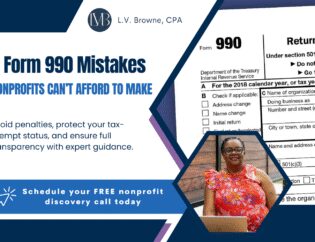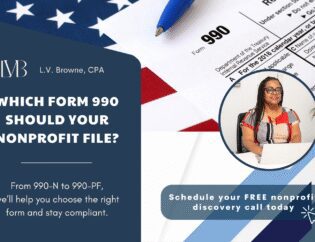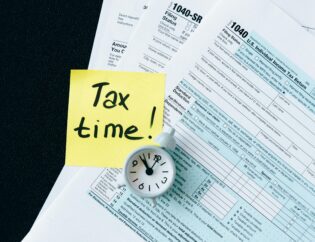
Student loan debt can feel like a never-ending weight, especially when you’re making consistent payments yet seeing little progress. If this sounds familiar, you’re not alone. Millions of borrowers across the U.S. are navigating the complexities of repayment while juggling other financial responsibilities. Fortunately, there are practical strategies, including some with tax benefits that can help you manage your debt more efficiently and potentially reduce your tax burden.
At L.V. Browne, CPA, we believe financial clarity is the first step toward financial freedom. Here’s what you should know:
1. Student Loan Interest Deduction
Eligible borrowers can deduct up to $2,500 of student loan interest on their federal tax return annually. This above-the-line deduction reduces your taxable income even if you don’t itemize deductions.
To qualify:
- You must be legally obligated to repay the loan
- Your income must fall within IRS limits (deduction begins to phase out at $75,000 for single filers and $155,000 for joint filers)
- You or your dependent must have used the loan for qualified education expenses
Tip: Keep an eye out for Form 1098-E from your loan servicer which reports how much interest you paid.
2. Refinancing: Consider the Tradeoffs
Refinancing high-interest student loans might be worthwhile. By consolidating federal or private loans into a single private loan with a lower rate, you can reduce monthly payments and interest over time.
However, refinancing federal loans with a private lender means forfeiting federal benefits such as income-driven repayment plans, deferment, or Public Service Loan Forgiveness (PSLF).
3. Income-Driven Repayment (IDR) Plans
If your payments are unmanageable, IDR plans base your monthly payment on your income and family size. The main types include Income-Based Repayment (IBR), Pay As You Earn (PAYE), Revised Pay As You Earn (REPAYE), and Income-Contingent Repayment (ICR).
These plans can lower your monthly payments and lead to loan forgiveness after 20–25 years. However, forgiven debt may be taxable, depending on the program.
4. Loan Forgiveness and Tax Implications
Programs like Public Service Loan Forgiveness (PSLF) can forgive remaining debt after 10 years of qualifying payments while working for a nonprofit or government employer, and this forgiveness is currently tax-free. In contrast, forgiveness under IDR plans (after 20 or 25 years) may be treated as taxable income. If you expect loan forgiveness, start planning early to account for any future tax liability.
5. Temporary Relief Options
If you’re struggling to make payments, forbearance or deferment may offer temporary relief. But interest often continues to accrue, especially during forbearance.
Federal deferment may allow you to pause payments without accruing interest depending on the type of loan and your circumstances (e.g., unemployment, economic hardship, military service).
We’re Here to Help
Paying off student loans can feel overwhelming, but you don’t have to do it alone. A clear repayment strategy that aligns with your goals, income, and tax situation can make all the difference. Reach out to L.V. Browne, CPA, for expert guidance or schedule a free consultation.










